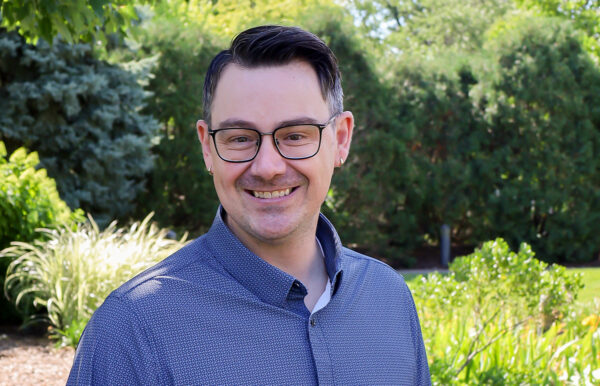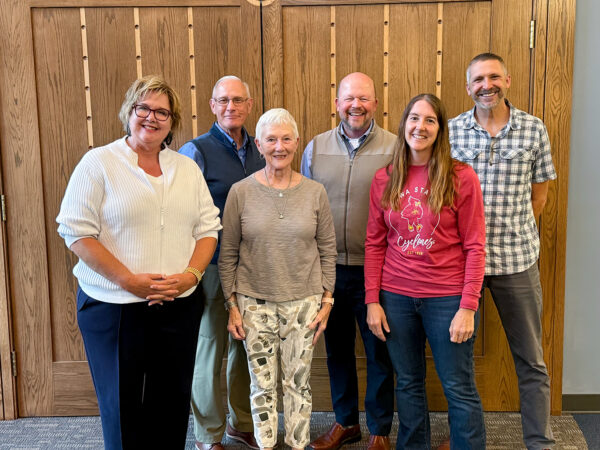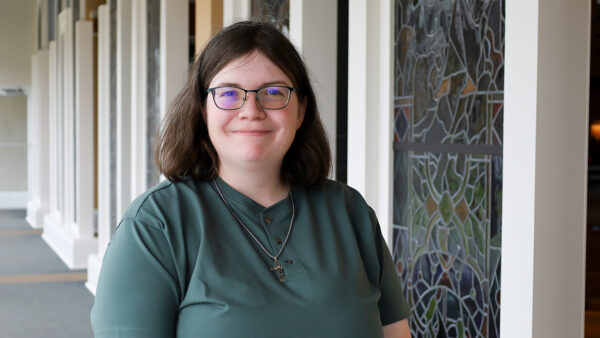Teaching, reconfigured
Educators, from preschool through college, embarked upon an adventure (and struggle) of teaching their students online for the last two months of the 2019-2020 school year. Meet some St. Paul educators, who offered their perspectives on the challenge.
MIKE REINHOLDT, Buchanan Elementary, Davenport
This school year has been unlike anything I or any teacher has ever known. In a span of only a couple of weeks my classroom has transformed into one that is completely virtual. Let me tell you, teaching during a pandemic is not for the faint of heart.
Assignments are posted in my “classroom” — a webpage that allows students to access materials in a somewhat coherent fashion. Online lessons come in the form of me waiting in a virtual meeting for students to attend (or not). Participation is completely voluntary at this point, so long gone are the days of my classes being full. Much of the personal connection of a student and a teacher has evaporated, the “lightbulb” moments and the impromptu situations that present themselves in a traditional classroom as well.
However, through this experience I have begun to better understand the obstacles my students face in their daily learning. At home many of my students must prioritize between school and taking care of younger students or preparing meals for their family. They often don’t have access to internet and need to leave their homes to complete schoolwork.
In spite of these challenges, these students continue coming to class, completing assignments, and learning. This passion in the face of ever-present obstacles inspires me to keep pushing on, innovating the classroom, and bringing my best face to the class. I hope that I take these lessons back with me when we return and we can safely gather again. Even though the school halls are dark and the classrooms empty, learning for everyone continues albeit very different from before.
DAWN STONE, Williams Intermediate, Davenport
Friday the 13th was our last day of school. I feel it’s pretty safe to say that very few of us ever dreamed it would be our last “normal” day of school. Teaching during a pandemic has been a challenging, adventurous experience.
Aside from required meetings during the day, I do most of my school work after Stone Family School is completed. As a middle school vocal music teacher, singing together has become something we only dream about doing again someday.
However, a silver-lining to this experience has been the opportunity to collaborate with vocal music teachers in our district to prepare lessons and videos for our Vocal Music and General Music Google Classrooms. Using different recording techniques and programs has been a learning curve for all of us.
The mental aspect of this has been more difficult. I didn’t get to say good-bye to my eighth-graders that I’ve had since they were in sixth grade, I didn’t get to teach the last group of sixth grade general music students, we didn’t have the end-of-year anticipation and we didn’t get to perform our final concerts. Returning to my classroom again a couple of weeks ago heightened these feelings of grief. I’m in the process of writing letters to all of my seventh- and eighth- grade students. I say my good-byes and tell them how much I’ve enjoyed working with them. I’ve received handwritten letters back from four of my students and several more emails from others. These have brought me joy in a disappointing time.
CATHY ANDERSON, Butterworth Elementary, Moline
The first time I hosted a video call with my class of third graders, I had to hold back tears of joy each time another student joined the call. It was so wonderful to see each of their sweet smiling faces! And the kids were SO excited to see each other.
It’s been many weeks of distance learning, and I am still happy each day when I get to see my students on video calls. I have just over half of my class who log on every single day, watch my daily videos, complete all their assignments, and attend every reading group and class video call that I host. About ¼ of my class logs on a few days a week, completes part of the work, and comes to some video calls. And ¼ of my class I have not been able to reach — at all. Phone calls, texts, emails, classroom app messages have all gone unanswered. I mailed them paper packets of work to complete and I can only hope that they are working on them or doing some sort of learning, and I pray that those students are being fed and cared for at home.
I have had to be creative in new ways as a distance learning teacher. I’m constantly coming up with new things to do at our Google Meets. Scavenger hunts, science experiments, virtual four corners games, and multiplication mysteries have been big hits. Singing our spring concert songs together with the lag time of a video call was not so successful. Small online reading groups have given the kids a chance to connect with each other, and help me keep that connection with them.
I know it’s not easy for parents to help their kids learn at home, and I try to assign work that each student can complete individually. I love the videos my students submit to me, telling me what they learned from reading an article, or what their favorite part of a book was. And it is so much easier to read the typed rough draft of their opinion writing than it was to read their sprawly cursive handwriting.
We all miss being together. Learning together. Working together. Someday, we will be able to do that again, but for now, our virtual fist bumps and chants of “I’m glad you came to school today!” at the beginning of each video call will have to do.
JASON MAHN, Augustana College
Two months ago, Augustana College announced an extended spring break, followed by the decision to move to distance-learning for the remainder of the semester. A couple hundred colleagues and I used that spring break to learn the best practices of “distance learning” — how to use Moodle and Google, Zoom and Loom, forums and chat rooms and blogs (oh my!).
Fast-forward to this, the last week of the semester (in May), and I’m helping eight graduating religion majors put together a journal that showcases their “senior inquiry” projects, now that the academic conference they had planned to present at was cancelled. A handful of pre-seminary students and I just had our final “Working with Faith” class over Google Chats — a rather deep discussion of Nadia Bolz-Weber’s latest book. I’ve finished responding to essays from 20 “Encountering Religion” students writing about Islam and Islamophobia after they interviewed a local Muslim leader. After meeting one-on-one (through screens) with me, all of my first-year advisees have successfully registered for Fall courses that we desperately hope will be on campus.
Being a college professor through this difficult time has been a gift and a challenge. It’s a gift that my work can be done at home — and occasionally from a deserted Old Main. It’s a gift to work with fellow educators who are going out of their way to be patient, caring, and supportive of one another. Most of all, it is a gift to work with 18-22-year-olds, to continue to help them find their voice and paths, and to learn from them in the process. The greatest challenge is how to connect with students, to inspire them and be inspired, when most of the connections are virtual.
I don’t want liberal learning (that is, deep and wide learning) to be reduced to “conveying” some information through cyberspace. I miss sitting with them in our classrooms, or going over drafts of their writing in “The Brew,” or even playing a “noonball” pickup game of basketball with those I am still able to guard. When I am teaching at my best, I am modeling my own learning, a learning that happens through the body and spirit as well as the mind. I’m more than ready to be back together in the Fall — even if only every-other desk is filled, if we have to forgo noonball, and if the chairs in the coffee shop are six feet apart.




